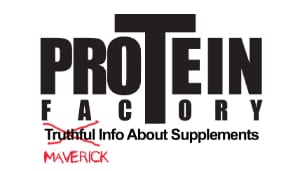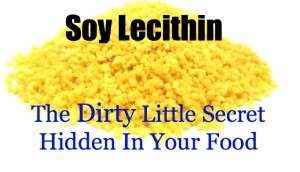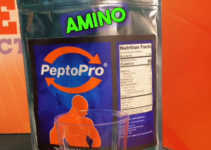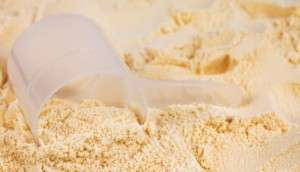When it comes to supplements, whey protein is the undisputed king. It is important, actually it is critically important that you know the
TRUTH ABOUT WHEY PROTEIN POWDERS…
and what research is now telling us about a superior form of whey protein, which you may have heard already, called native whey protein.
Native whey protein is made directly from milk. Most of the common whey proteins found on the retail shelf or sold on the internet are made from cheese, not directly from milk, therefore it does not hold the title of “Native”. This is the big difference between these two types of whey protein. One comes directly from milk and the other, directly from cheese.
Native whey protein is a higher quality protein for one big reason, it is only pasteurized one time. Whey protein from cheese is pasteurized twice. When whey protein is pasteurized it is denatured to a certain extent. From a food technology stand point, one would agree, because of this reason, native whey is a higher quality food product. However, if you’re wondering whether this high-quality native whey protein equates to more muscle over using whey protein from cheese, I can tell you that I believe it will.
In a recent study published in 2017, entitled,
Native whey induces higher and faster leucinemia than other whey protein supplements and milk: a randomized controlled trial
It was found that subjects consuming native whey protein, had more of the amino acid leucine in their blood than subjects that consumed whey protein concentrate. Leucine is the key amino acid to increase muscle protein synthesis.
If you have ever spoken to me on the phone or via text you will know that I have stated that I believe native whey protein is a higher quality protein than regular whey protein. The reason I believed this was because of the simple fact that it is only pasteurized once, instead of twice. Therefore I theorized this less denatured whey protein would have a higher biological value resulting in a more favorable increase in protein synthesis. Up until now, I did not have any research studies to refer, to back up this statement of mine. However, now I do. The study above concluded that native whey protein has the greater potential to generate muscle protein synthesis.
A few notes about the study.
I found some things interesting about the study above. They used a hydrolyzed whey protein but stated it was only 10% hydrolyzed. This was disappointing to me because the quality of hydrolyzed whey proteins vary drastically. From reading my website, you should know that hydrolyzed proteins can vary from about 30% hydrolyzed to 1 % hydrolyzed. Obviously, the higher the percentage a whey protein is hydrolyzed the better. A hydrolyzed whey protein that is only 10% hydrolyzed I consider low quality. Not only that but they didn’t tell you the molecular weight of the hydrolyzed whey protein they used. As you can see in the study, native whey protein was digested faster than the hydrolyzed whey protein. And this I theorize can be because of the use of the low quality hydrolyzed whey protein. Maybe if the researchers used a high quality hydrolyzed whey protein like my Hydrolyzed 520, the results would have been different.
Conclusion
One must remember that building muscle is just not about take X supplement and grow X amount of muscle. Building more muscle with supplements takes a combination of food, diet, and working out. Do you think a combination of Peptopro, Native Whey, and a high GI carb would produce a greater increase in muscle protein synthesis than chocolate milk, or just by drinking plain old whey protein concentrate? Of course it would!!
If you think you’re giving your body the so-called “best protein” by drinking
[easyazon_image align=”none” height=”110″ identifier=”B000QSTBNS” locale=”US” src=”https://proteinfactory.com/wp-content/uploads/2017/02/51v1H3DqJJL.SL110.jpg” tag=”bp025-20″ width=”88″]
than I have bridge to sell you. With this new recent study, my theory that native whey protein is the superior version of whey protein is now validated.
I think at this point it is almost common sense that a stack of high quality proteins like Peptopro and native whey will produce better muscle results. Then adding things like more hydrolyzed whey or specialty powders like my Advanced BCAA or creapure will result of an even a higher success in conjunction with your muscle building goals. Consuming a basic whey protein concentrate with soy lecithin is simply using a lower quality whey protein, no questions asked!
Suggested protein powder stacks.
Basic muscle building stack.
- 1/4 cup native whey protein
- 2 tsp of Peptopro
- 1/4 of Oatmuscle
Post-Workout Insulinotropic Stack
- 2 tbs of native whey protien
- 1 tbs of Hydrolyzed whey protein 520
- 1 tbs of Advanced BCAA
- 1/3 cup of dextrose
Meal replacement stack
- 1/4 cup of Oatmuscle
- 2 tbs of Heliogen casein protein
- 2 tbs of Native whey protein
Alex Rogers is a supplement manufacturing expert. He has been formulating, consulting, & manufacturing dietary supplements since 1998. Alex invented protein customization in 1998 & was the first company to allow consumers to create their own protein blends. He helped create the first supplement to contain natural follistatin, invented whey protein with egg lecithin, & recently imported the world’s first 100% hydrolyzed whey.









